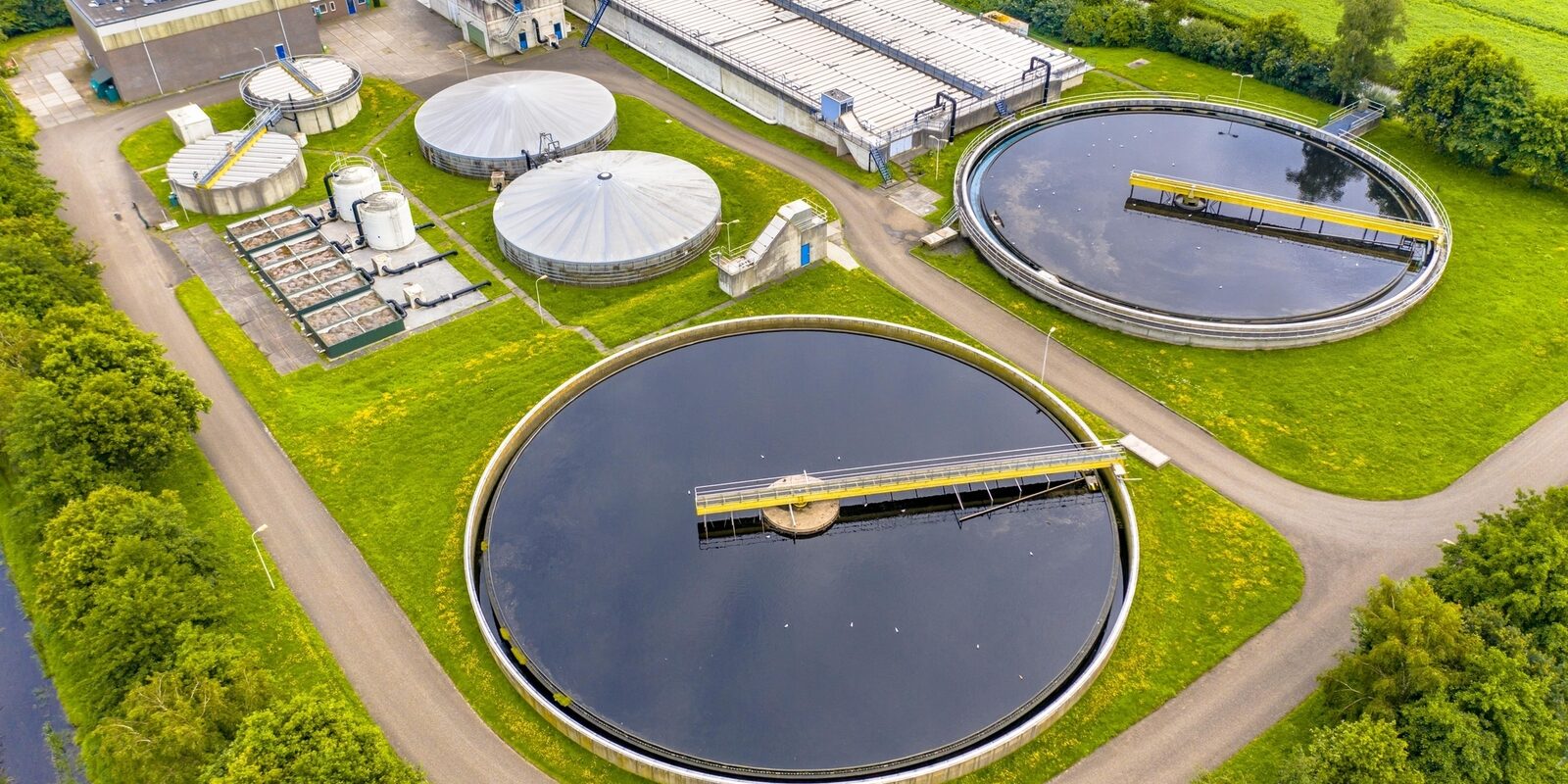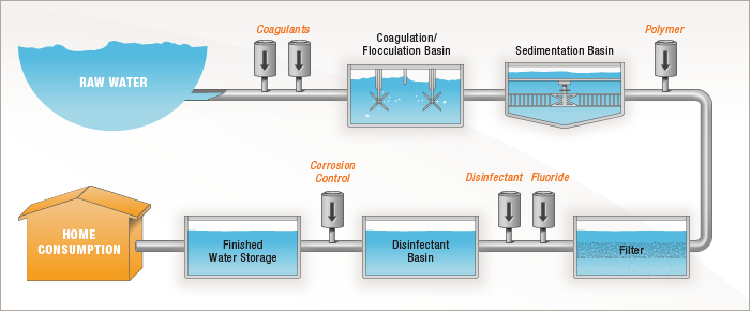Advanced water treatment polymer enhances the filtration process.
The Relevance of Water Treatment Polymer in Modern Environmental Solutions
In today's context of intensifying ecological challenges, the duty of water treatment polymers has actually arised as a keystone of reliable water purification procedures. The landscape is developing, and the effects for future water therapy practices necessitate a closer evaluation.

Role of Water Treatment Polymers
Water therapy polymers play an important duty in enhancing the effectiveness of water filtration processes. These artificial natural compounds function mostly as coagulants and flocculants, promoting the gathering of suspended particles and colloids in water. By promoting the formation of larger collections, or flocs, these polymers substantially boost the sedimentation price and filtering performance, leading to more clear and cleaner water.
In addition to their coagulation and flocculation residential properties, water therapy polymers can also assist in the removal of particular pollutants, consisting of hefty steels and natural contaminants. They accomplish this by altering the surface attributes of bits, which improves their communication with other treatment chemicals. The usage of polymers can lower the quantity of chemical ingredients required in therapy processes, consequently lessening prospective environmental effects.
Another vital aspect of water treatment polymers is their capacity to do successfully across a series of problems, consisting of varying pH levels and temperature levels. This adaptability makes them crucial in both metropolitan and commercial water therapy centers. Eventually, the function of water therapy polymers is essential for making sure compliance with ecological guidelines and attaining lasting water management techniques.
Benefits of Polymer Use
The use of polymers in water treatment procedures supplies various advantages that improve both operational effectiveness and environmental sustainability. One substantial advantage is the enhanced performance in coagulation and flocculation, which causes improved removal of put on hold solids and contaminants from water resources. This efficiency not only causes cleaner water but likewise lowers the requirement for too much chemical additives, promoting a much more environmentally friendly strategy to water treatment.

Polymers likewise boost the security of water treatment systems, allowing for more consistent performance under varying functional problems. Their convenience makes it possible for therapy centers to adjust to different water top qualities and treatment goals, thus guaranteeing compliance with regulative requirements.
Kinds of Water Therapy Polymers
Polymers utilized in water treatment can be categorized into a number of types, each serving distinct functions and applications within the therapy procedure. The key groups consist of coagulants, flocculants, and dispersants.
Coagulants, such as polyaluminum chloride and ferric sulfate, facilitate the gathering of put on hold bits in water by neutralizing their costs. This is important for the elimination of turbidity and other pollutants. Flocculants, on the other hand, promote the formation of larger accumulations, or flocs, making it important link possible for less complicated elimination of particles from water. Common flocculants consist of polyacrylamide and cationic starches.
Dispersants are used to maintain suspensions and stop the settling of solids (water treatment polymer). By changing the surface residential properties of particles, they improve the performance of treatment procedures, especially in wastewater monitoring
Additionally, there are specialized polymers designed for particular applications, such as biopolymers acquired from natural resources, which often offer ecologically friendly alternatives to synthetic alternatives. Picking the ideal kind of polymer is important for optimizing water therapy procedures, ensuring efficient impurity elimination, and boosting general water top quality.
Applications in Numerous Industries
In various industries, the application of water treatment polymers plays a considerable role in improving efficiency and effectiveness in handling water high quality. These polymers are made use of in metropolitan water treatment centers to assist in coagulation and flocculation procedures, therefore boosting the elimination of debris and contaminants. In the oil and gas industry, water treatment polymers assist check this site out in managing produced water, guaranteeing the risk-free disposal and recycling of water while lessening ecological influence.
In addition, the fabric sector utilizes water treatment polymers to assist in color elimination and wastewater purification, critical for fulfilling rigid regulative requirements. water treatment polymer. In the food and drink market, these polymers are vital in making sure the security of water utilized in production procedures, adding to item high quality and compliance with health laws
In addition, the mining sector take advantage of water therapy polymers, which are made use of to minimize water use and boost the recovery of valuable minerals from ore. Overall, the convenience and efficiency of water treatment polymers throughout these varied applications highlight their essential function in promoting lasting methods and safeguarding water sources in modern industrial procedures.

Future Trends in Water Treatment
Arising patterns in water treatment are significantly defined by the integration of sophisticated technologies and cutting-edge materials. water treatment polymer. The fostering of wise water management systems, which use real-time information analytics and IoT devices, is changing the way water high quality is kept track of and managed. These systems enable very early discovery of contaminants and enhance therapy processes, leading to improved performance and reduced functional prices
Furthermore, making use of water treatment polymers is getting grip as they provide significant advantages in flocculation, sedimentation, and purification procedures. These polymers help with the elimination of toxins at reduced dosages, therefore reducing chemical usage and ecological influence. The development of naturally degradable and environmentally friendly polymers is additionally becoming a key focus, lining up with worldwide sustainability objectives.
Furthermore, advancements in membrane layer modern technology, such as nanofiltration and reverse osmosis, are improving the removal of micropollutants and offering safe and clean water from unusual sources, like seawater and wastewater. helpful hints As regulatory frameworks evolve and public demand for tidy water magnifies, these trends are expected to shape the future landscape of water treatment, promoting a more sustainable and resilient method to water resource management.
Conclusion
In conclusion, water treatment polymers are necessary elements in modern environmental solutions, substantially improving water purification processes through boosted coagulation and flocculation. Their capacity to minimize chemical usage while properly getting rid of impurities highlights their value in accomplishing regulatory conformity and sustainability objectives. As markets continue to prioritize tidy water gain access to, the ongoing development and application of these polymers will play a critical function in addressing the challenges of water treatment and environmental management in the future.